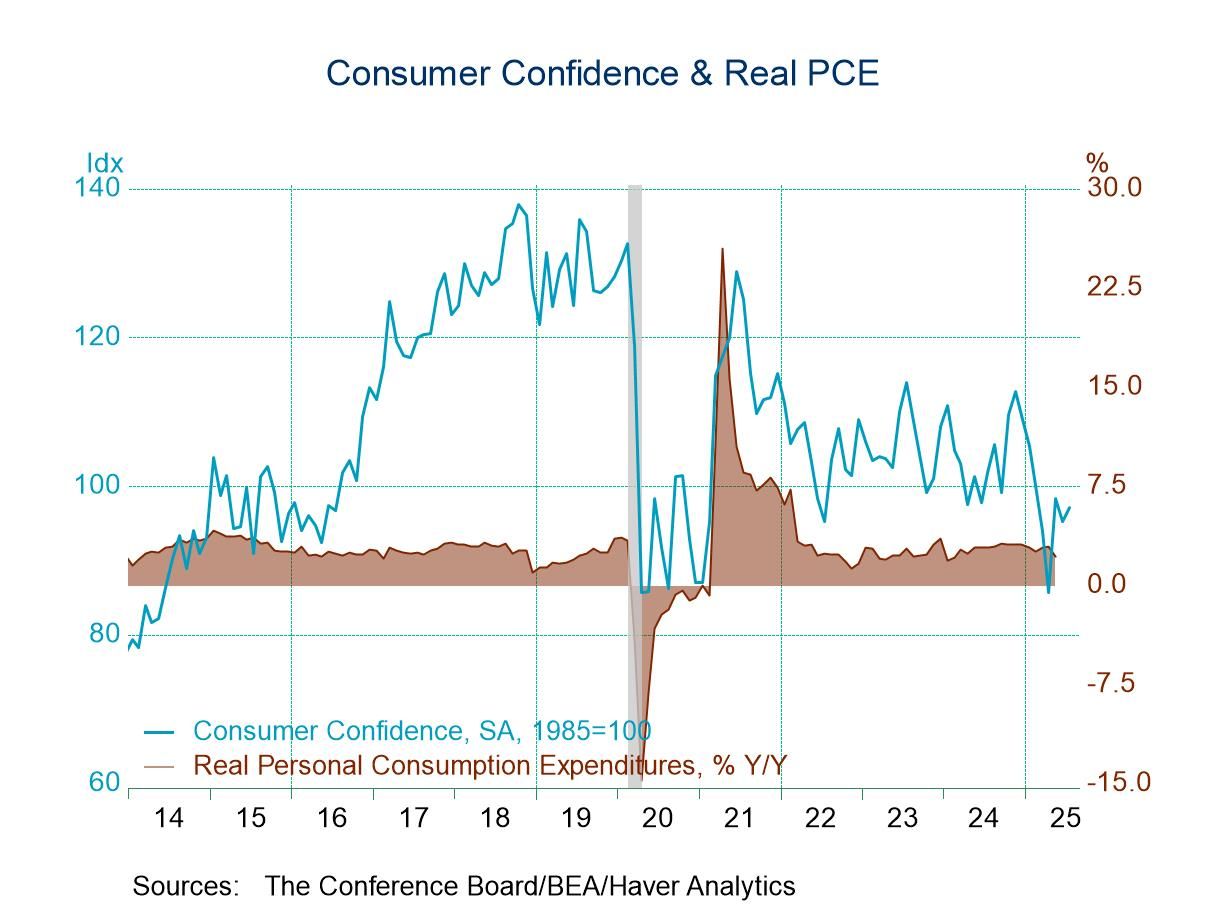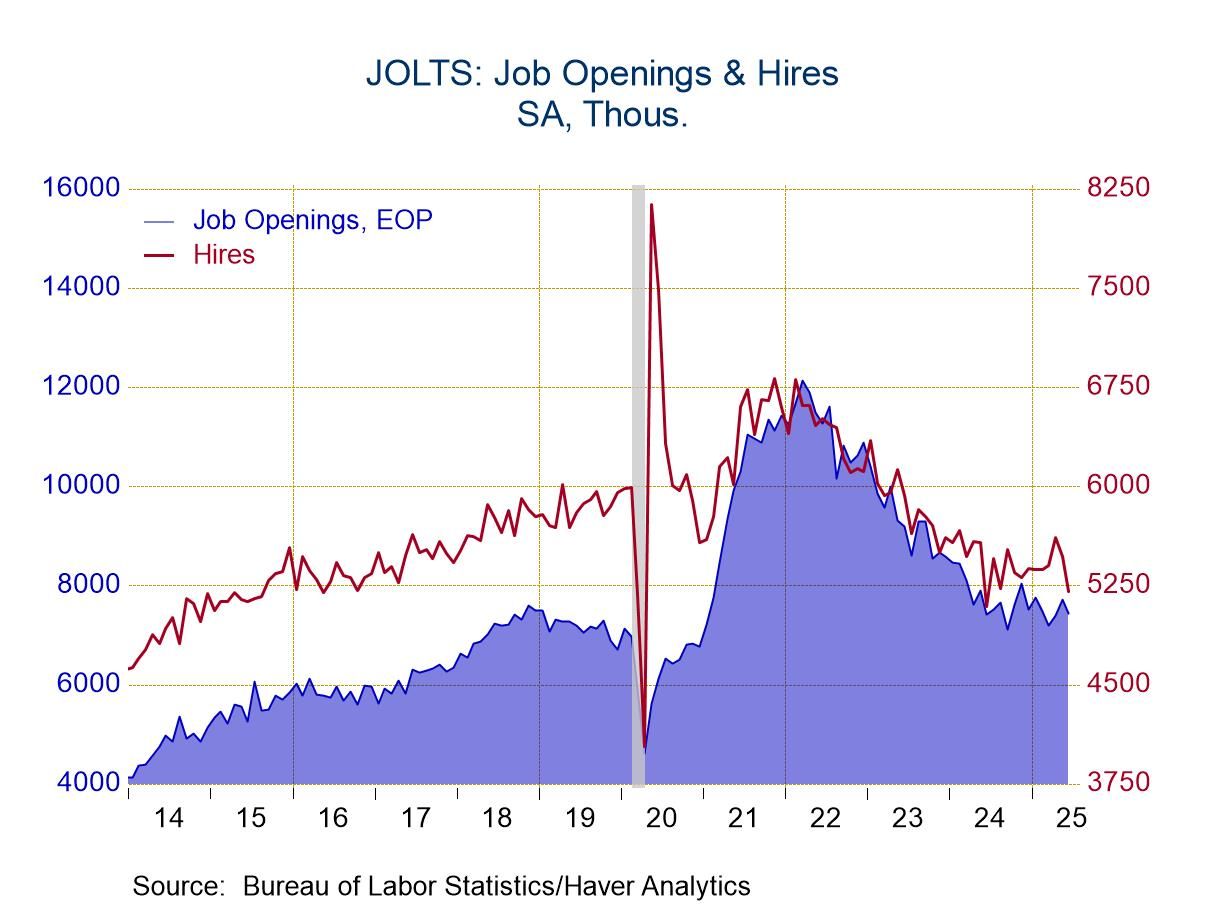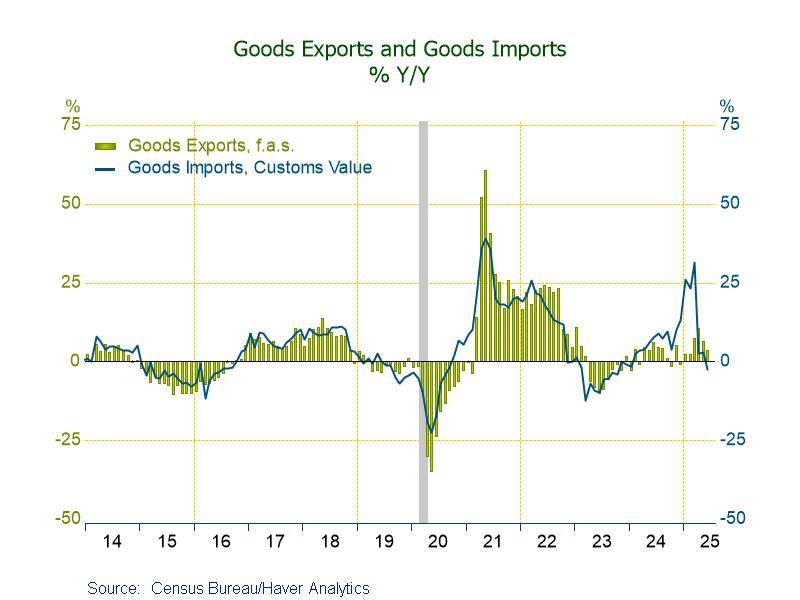U.S. NFIB Small Business Optimism Declines to a Six-Month Low in November
Summary
- NFIB Small Business Optimism Index slips 0.1 pt. to 90.6 in Nov., well below its long-term avg. of 98.
- Small Business Uncertainty Index falls to the lowest reading since June ’22.
- Business conditions in the next six months tick up to -42%; expected real sales rise to a one-year-high -8%, still a pessimistic outlook.
- Quality of labor (24%) and inflation (22%) are top business concerns.


The NFIB Small Business Optimism Index dipped to 90.6 in November, the fourth consecutive monthly decline to the lowest level since May, from 90.7 in October, according to the November 2023 Small Business Economic Trends survey conducted by the National Federation of Independent Business. The index, while slightly up from a low of 89.0 in April, had been below the 50-year average of 98 for the 23rd straight month; it was also down from 91.9 in November 2022 and a high of 102.5 in June 2021. Five of the 10 index components rose, four fell, and one was unchanged. The NFIB Small Business Uncertainty Index dropped to 65 in November, the lowest level since June 2022, from 76 in October; it was down from 68 in November last year.
The outlook for business conditions in the next six months remained deeply negative in the latest survey. The net balance of respondents expecting the economy to improve increased one point to -42% in November following -43% in October and September; it was up from -43% in November 2022 and a record-low -61% in June 2022. Expected real sales were up slightly to a net -8% in November from -10% in October, registering the highest level since November 2022 (-8%). Although the latest reading indicated continued pessimism, it was up from a low of -29% in July 2022. A net -17% of respondents reported higher nominal sales in the past three months, unchanged from October and the lowest level since July 2020; it was well below -7% in November last year.
Plans to make capital outlays slipped to 23% in November, the lowest reading since April, from 24% in October; the latest result was slightly less than 24% in November 2022 but down from a high of 31% in October 2021. Meanwhile, plans to expand the business rose to a net 8% in November after rising to 6% in October; the latest reading was up from a low of 2% in March and 6% in November last year. Expected credit conditions fell to -11% in November, the lowest level since December 2012, from -9% in October; it was below -6% in November 2022.
Labor markets remained tight with 50% of respondents reporting that qualified workers to fill job openings were hard to find in November. The latest figure was down from 55% in October, 54% in November 2022 and a high of 61% in May 2022. A net 18% planned to increase employment in November, slightly up from 17% in October and unchanged from 18% in November last year. Notably, 40% reported positions not able to be filled in November following 43% in October and September, remaining historically high; however, it was down from 44% in November 2022 and a high of 51% in May 2022. Overall earnings trends were unchanged at -32% in November, the lowest level since August 2022; the latest reading was down from -22% in November last year.
On the pricing front, inflation pressures, while trending down, remained at an inflationary level. The net percent raising their average selling prices eased to 25% in November, the lowest reading since July, from 30% in October; it was meaningfully down from 51% in November 2022 and a high of 66% in March 2022. The percentage planning to raise prices increased to 34% in November from 33% in October; it was the highest level since November 2022 (34%) but well below a high of 52% in March 2022.
Wage inflation also remained high as a net 36% of respondents raised compensation during the last three months, unchanged from October’s reading. Nevertheless, it was down from 40% in November 2022 and a peak of 50% in January 2022. A net 30% of firms planned to raise worker compensation in the next three months, the highest level since October 2022; the latest reading was up from 24% in October and 28% in November last year.
Inflation continued to be a problem facing small businesses, as reported by 22% of NFIB members in November and October, down from 32% in November 2022 and a peak of 37% in July 2022. However, the quality of labor (24% in November vs. 23% in October) had taken over as the single most important problem facing small businesses. Other concerns (in November vs. October) included taxes (14% vs. 13%), government requirements (10% vs. 9%), and the cost of labor (8% vs. 9%).
According to the Small Business Administration, there are 33 million small businesses in the United States, which employ 62 million workers. The NFIB surveys anywhere from 500 to 2000 respondents each month and the typical firm employs 10 people and reports gross sales of about $500,000 a year. The NFIB figures can be found in Haver’s SURVEYS database.


Winnie Tapasanun
AuthorMore in Author Profile »Winnie Tapasanun has been working for Haver Analytics since 2013. She has 20+ years of working in the financial services industry. As Vice President and Economic Analyst at Globicus International, Inc., a New York-based company specializing in macroeconomics and financial markets, Winnie oversaw the company’s business operations, managed financial and economic data, and wrote daily reports on macroeconomics and financial markets. Prior to working at Globicus, she was Investment Promotion Officer at the New York Office of the Thailand Board of Investment (BOI) where she wrote monthly reports on the U.S. economic outlook, wrote reports on the outlook of key U.S. industries, and assisted investors on doing business and investment in Thailand. Prior to joining the BOI, she was Adjunct Professor teaching International Political Economy/International Relations at the City College of New York. Prior to her teaching experience at the CCNY, Winnie successfully completed internships at the United Nations. Winnie holds an MA Degree from Long Island University, New York. She also did graduate studies at Columbia University in the City of New York and doctoral requirements at the Graduate Center of the City University of New York. Her areas of specialization are international political economy, macroeconomics, financial markets, political economy, international relations, and business development/business strategy. Her regional specialization includes, but not limited to, Southeast Asia and East Asia. Winnie is bilingual in English and Thai with competency in French. She loves to travel (~30 countries) to better understand each country’s unique economy, fascinating culture and people as well as the global economy as a whole.






